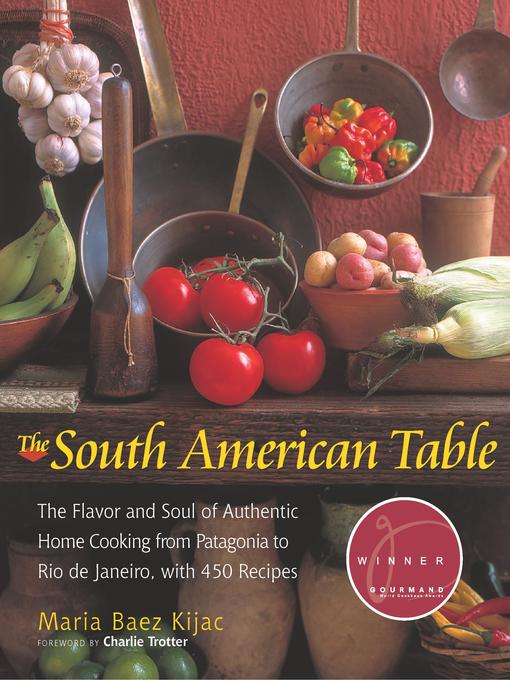
The South American Table
The Flavor and Soul of Authentic Home Cooking from Patagonia to Rio de Janeiro, With 450 Recipes
کتاب های مرتبط
- اطلاعات
- نقد و بررسی
- دیدگاه کاربران
نقد و بررسی

July 21, 2003
This authoritative and admirably comprehensive cookbook recalls the seminal work of culinary pioneers Diana Kennedy and Madhur Jaffrey. Assuming the responsibility of introducing specific and authentic South American cuisine to the American cook, Kijac (Cooking with a Latin Beat) offers a thorough volume that is part reference book and part cookbook. Long chapters about the geography of South America and its pre-Columbian civilizations, as well as a history of cooking in South America precede the hundreds of recipes. A glossary of South American ingredients as well as a dictionary of ingredients are included as well. The recipes are wonderful, if overwhelming in number. Beverages such as Cachaca Sour, salads such as Watercress, Lupini Bean and Avocado, and Mariana's Chicken are must-tries. The Condimentos section will appeal to anyone who loves the zest and bright flavors of salsas. Many of the recipes are homey (Coconut Bread Pudding), making the book even more attractive. Ambitious and informative, this volume belongs on the shelf of the serious cook.

October 15, 2003
The cuisines of South America are becoming increasingly popular in the United States, but although there are more than a handful of good cookbooks on various individual countries, other than Felipe Rojas-Lombardi's Art of South American Cooking (1991) and Elisabeth Lambert Ortiz's 1979 Book of Latin American Cooking, there are few on the cooking of the region as a whole. As such, Kijac's big new book, obviously a labor of love, should become a classic. She has drawn on both Spanish-language cookbooks and recipes from home cooks and restaurant chefs to present authentic versions of dozens of dishes, many of which appear in differing forms in the regional cuisines of South America. A number of the recipes will be new to North American cooks, and Kijac's thoroughly researched, readable text will serve as an invaluable culinary resource as well. Highly recommended.
Copyright 2003 Library Journal, LLC Used with permission.

November 15, 2003
A sprawling continent comprising many different climates, cultures, and culinary traditions, South America remains the most obscure part of the globe for North American cooks. Thanks in part to "The South American Table," by Maria Baez Kijac, South American food promises to become much more a part of the culinary landscape for North Americans. Kijac reminds readers just how many commonplace food products originated in South America: chocolate, corn, potatoes, tomatoes, hot peppers, and pineapple, to mention only some. Political developments influenced the evolution of South American cuisine after Columbus opened the continent to Europeans and the importation of Africans brought unusual reciprocity: South America gave Africa the cassava and sweet potatoes, and slaves introduced African tastes into the cooking of Brazil. One dish appearing in several South American cuisines, tamales differ from one part of the continent to another according to the sort of dough used to hold the filling. The familiar corn masa wrapped in cornhusks appears in Mexican cooking and in some parts of northern South America. But other versions call for potatoes, rice, or yucca, each worth sampling. Meat is critical to Argentine and Brazilian fare, and Kijac supplies marinades and instructions to reproduce these in northern climes. A glossary and a dictionary of ingredient names reflecting Spanish, Portuguese, and native terminologies helps clarify words. In general, recipe ingredients are well identified so that most recipes may be reproduced with a modicum of effort. This is a great introduction to an underappreciated culinary tradition and should be a vital part of any ethnic cookbook collection. (Reprinted with permission of Booklist, copyright 2003, American Library Association.)

























دیدگاه کاربران